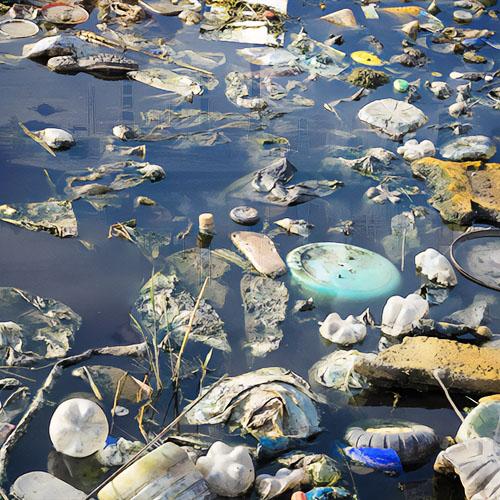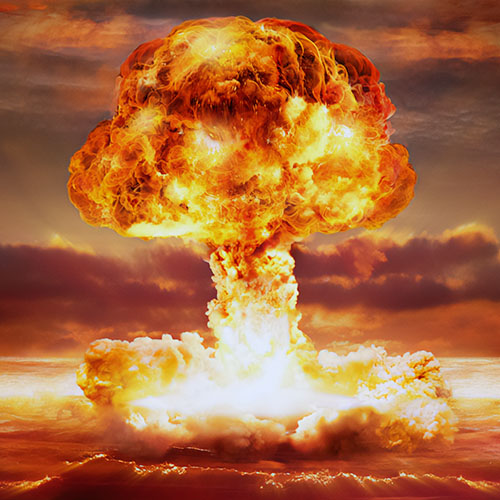In mid-July 1973, the Federal Trade Commission filed a weighty antitrust complaint against eight of the world’s largest oil companies — Exxon, Texaco, Gulf, Mobil, Standard of California, Standard of Indiana, Shell, and Atlantic Richfield — charging them with unlawfully monopolizing refining, driving competitors out of business, manipulating supplies to create a gasoline scarcity, and reaping excessive profits.
Oil Companies: The Old Shell Game
A few months later, Japan, now one of the largest consumers of petroleum products, indicted executives of twelve major oil-refining firms for conspiring to fix prices and to curtail production. This was the first criminal charge against a cartel in Japan’s twenty-seven-year history of antitrust activity.
Such actions as these do not foretell a loosening of the oil industry’s stranglehold on the world, however. Most probably, the above legal fights will be dragged out in court for many years before coming to an inconclusive ending in compromise.
But at least these actions may indicate that a desperate public is at last beginning to wise up to the fact that it cannot go on playing the game of supply-and-demand by the oil industry’s whimsical rules. And perhaps the public is beginning — just beginning, in a feeble way — to convey its desperation to some of the governments around the world. That would indeed be a radical change from the past.
For fifty years the major international oil companies have manipulated prices in the United States — and recruited public opinion and government policy to support the manipulations — by a series of fear campaigns that have seldom been challenged.
Since the 1920’s, when only one out of every seven Americans owned a motorcar (compared to the one car per two adult Americans today), the national economy and the public’s comfort have depended on the automobile. This has provided a perfect context for industrial blackmail, and the oil industry has seized the opportunity, not only to obtain higher prices but to force the State Department and the Justice Department to do it’s dirty work — by collusion if not always by direct involvement. And the press, whose owners have long been richly subverted by automobile and gasoline advertising, has, with very few exceptions, played along with the industry’s game.
An accusation like this will be offensive to most Americans, of course, because it implies that we are a nation of suckers, but there is more than enough proof of its accuracy.
First let us put the present claim of an “oil crisis” in the proper perspective. There have been other “crises” — all of them as phony as this one and all of them contrived for similar reasons. Among men in the industry, these recurring crises are an old, old joke. Fifteen years ago, in a Senate speech little noticed at the time, Senator Russell Long of Louisiana, an oil millionaire himself and a defender of plunder, got to laughing with his Senate col leagues about some of the great hoaxes of the past.
“Five times before, beginning in 1914, American oil companies invented fake “oil shortages” to raise the price of gasoline. This year, we fell for it again.”
Long ticked off a few examples — the “crisis” of 1914 was one of the best. In that year, Britain was about to enter World War I and had just converted her navy from coal to oil, so it was absolutely vital that her supply of oil be uninterrupted. Obviously, Britain — and France, too, for that matter — were ripe for plucking. All our oil men needed to do was to present a picture of scarcity. This was easy to arrange. In 1914 Standard Oil, monarch of world oil at the time, supported by statements from the U.S. Bureau of Mines (which has always been in the industry’s pocket), announced that the United States was down to its last 5.7 billion barrels of oil reserves — scarcely enough to last out the decade — and after that there would be no more. Oil had clearly become a precious commodity. Up went the price.
When the war ended in 1918, the oil companies — instead of running out of oil — were stuck with a surplus. If they had allowed the law of supply and demand to rule prices, oil would have become cheap. To correct that situation the companies contrived another “crisis” in 1920. This time, they persuaded the U.S. Geological Survey to announce that domestic oil production would start to decline sharply within three years, with no hope of recovery. Shortages were reported all over the country — just like today. Gasoline was rationed in California and Oregon. The magazine Automotive Industries reported on August 25, 1920, “It is alleged that the shortage of gasoline [in California] was fictitious and due to manipulation. Allegations are made that the refineries created the shortage by shipping gasoline from Los Angeles to northern parts of the state and then, after waiting until the price advanced, bringing it back again for sales purposes.”
It worked. When prices reached thirty-seven cents a gallon — which would be about $1 a gallon by today’s prices — the “shortage” disappeared.
But only for a moment. The major U.S. oil companies, especially Standard Oil, were running into stiff competition overseas. By the early 1920’s, British oil companies had cornered much of the potential production domains of the Middle East, and were making significant inroads into South American, Mexican, and Dutch East Indies oil lands. American companies feared that they were going to be cut out of the world’s booty unless they could frighten the public into supporting a foreign policy that would help American oil companies get foreign leases, “for the national security.”
The industry’s propagandists began to circulate rumors that we were running out of oil, while Britain was cornering the world’s oil market. In fact, they said, we had only enough to last six years — after which we would be at the mercy of Britain, unless something were done. These rumors were so successful that there was actually serious talk in Washington about having to go to war with Britain. That talk ended when the British decided to split the Mideast booty with Standard Oil. The British weren’t fooled. In The Oil Trusts and Anglo-American Relations, published in 1924, British writers E. H. Davenport and Sidney Russell Cooke noted wryly, “There is this strange habit peculiar to the American oil industry which one should observe in passing. Although it doubles its output roughly every ten years … it declares every other year that its peak of production has been passed and that its oil fields are well-nigh exhausted. …Nevertheless new pools are continually producing wells brought in to replace those declining, and each year the total output turns out to be surprisingly greater than the year before. One cannot doubt that the lugubrious prophecies of American oil men are in some way related to, the wish for higher prices.”
Two years later, having trouble with the pesky Mexicans, who didn’t like the idea of Americans stealing their oil, U.S. companies pressured the State Department into strong-arming the Mexican government to allow higher imports into this country. The pressure came with the usual prophecy that the U.S. had only enough oil to last another six years.
During World War II, President Roosevelt and his Interior Secretary, Harold Ickes, tried to get Congress to set up a government-owned corporation, the Petroleum Reserve Corporation, to buy out the Saudi Arabian concessions of Texaco and Standard Oil of California. This would have been the first giant step toward the public’s winning independence from the international oil cartel. But the latter successfully pulled its old crisis trick again. In 194 7 the industry announced an imminent shortage — Standard Oil of New Jersey claimed it might not be able to last beyond 1955 — and declared that our wells were running dry. The only hope, they said, of preserving American industry and the American motorist was to give private industry not only a free hand in the Middle East, without U.S. government interference, but to encourage the private oil companies with large tax benefits from their overseas operations.
This crisis paid off immediately. The multinational oil giants began carving up the Middle East fields that very same year, 1947, and they did so with a secret promise from the U.S. Justice Department that there would be no prosecution for antitrust violations. Still-classified National Security Council documents show that in 1954 the government turned over our Middle East foreign pol icy to the oil corporations.
These corporations were further encouraged to exploit the Middle East by a foreign tax credit that was secretly contrived by the National Security Council in 1950 and secretly agreed to by the U.S. Treasury Department. This “golden handshake” permitted the oil companies to deduct from their U.S. taxes all royalties paid to the Middle Eastern governments, dollar for dollar. Thus the oil companies were encouraged to sink money into explorations around the Persian Gulf and to neglect oil explorations at home.
By the mid-1950’s the world was awash with oil. The big companies had been so successful in finding oil all over the globe that they didn’t know what to do with it. The world price for oil was low indeed — about $1.50 a barrel below what oil was selling for in the United States. And the oil companies were afraid to import much of the cheap foreign oil lest U.S. prices drop.
So in 1959, claiming that the U.S. domestic companies were imperiled by imported foreign oil and that we faced a shortage of petroleum products because of the lack of exploration in this country, multi-national giants persuaded President Eisenhower, always a willing fall guy for the industry, to establish an oil-import quota — allowing only a relative trickle of the foreign supply into this country.
This brings us to the present-the era of the big kill. The profits reaped from scare techniques of the past were nothing compared to what the future could hold. But the industry was now dealing with a more sophisticated citizenry, a citizenry grown somewhat accustomed to cries of havoc. The industry would obviously have to tread more cautiously, prepare its deception more carefully, building a momentum that could not be withstood. It succeeded very well indeed.
To show how it proceeded, we will break down the assault into two waves — natural-gas price propaganda and oil (gasoline, fuel oil) propaganda — so that it can be understood more clearly.
THE NATURAL GAS SHORTAGE MYTH
Natural gas supplies Americans with about one-third of their total energy.
Natural-gas prices have supposedly been regulated in interstate commerce since 1938, with the rates set by the Federal Power Commission. The FPC did its job in a very loose fashion, but prices remained low nevertheless because there was not much demand for natural gas in those days. In 1954, as demand began to build up, the federal courts ruled that the FPC was doing a lousy and incomplete job in controlling natural-gas prices and that it should regulate the sale of natural gas not only in the pipeline but also at the wellhead.
Industry’s first effort to undercut that ruling came in 1956, when it laid enough money around to persuade Congress to pass a law deregulating natural gas. But that effort was ruined — and Eisenhower, to his annoyance, was forced to veto the law for public-relations reasons — when it came to light that oil and gas lobbyists had in fact been bribing members of Congress.
But in those balmy Republican days, when business got by with just about anything, the FPC largely ignored the courts’ edicts anyway. When President Kennedy took over in 1961, however, and his FPC appointees began doing a better job of controlling prices, the industry went back to court in an effort to smash the price-control machinery. It claimed it needed higher prices because the natural-gas supply was dwindling critically. In the interim, while the case made its way to the Supreme Court, the industry kept a low profile by maintaining reasonable prices.
In 1968 the Supreme Court ruled that the FPC’s price-control policy was fair and that there was no substantial evidence that natural-gas reserves were getting low. In fact, the Court noted that each year industry discovered more new reserves than it produced. In other words, after a careful study ranging over several years, the Supreme Court came to the conclusion that there was no natural-gas shortage, no foreseeable shortage, and, by implication, that prices should not be allowed to balloon until such a shortage might exist.
At that, the oil and gas industrialists became furious. They determined to rid themselves, once and for all, of government price regulations. If the Supreme Court demanded proof of a shortage before it would go along with industry, then industry was prepared to juggle the record to show just that.
For the first time in history, industry began to claim that it was finding less natural gas than it sold — after it had conclusively lost in court. It has been claiming the same thing for every year since.
Do your own investigating on this point. There was not a single magazine article on the topic of energy shortage before the 1968 Supreme Court ruling. Then, all of a sudden, there was a great flurry of articles, a small explosion of concerned chatter, appearing in magazines notorious as industry mouth-pieces — Nation’s Business, U.S. News, Forbes — heralding an imminent shortage of natural gas. For the first time in the history of U.S. journalism there appeared a general-circulation magazine article with the head-line, “Looming Crisis in Natural Gas.” Industry’s propagandists had begun to shovel it out to their pals in the press.
Pure blackmail. Yet at the beginning of the natural-gas fear campaign, there was an interesting hesitation. Apparently industry was nervous about the public emotions it was stirring up. After all, if the citizens became hysterical, they might do something drastic — like nationalizing the oil and gas industry. So for a while the industry propagandists moved slowly. Even as late as 1971 they were hesitating to claim an outright shortage.
In a full-page advertisement in the Wall Street Journal of October 22, 1970, the American Gas Association announced soothingly: “Recent reports of natural-gas shortages in various parts of the country have apparently led to speculation that we are running out of natural gas. Now this is simply not true …. In fact, geologists estimate that proved and potential supplies are over seventy times our present annual consumption rate.”
There was no real shortage of gas underground, said the industry, but there was an effective shortage of supply simply because the industry wasn’t getting a high enough price. In 1971 advertisements began to appear in Life and other national magazines, paid for by the American Gas Association, assuring Americans that there was no reason to lay in a supply of wood and peat because “there’s no worry that your home will run short of gas …. We’ve been serving you for 100 years — and we don’t intend to stop now.” However, the American taxpayer was asked to bear one little burden: “It will take higher prices to keep the gas coming.”
Later the industry started playing really dirty. In 1971 James T. Halverson, director of the Federal Trade Commission’s Bureau of Competition, uncovered evidence that some of the companies were lying about their natural-gas reserves, disclosing only one-half to one-tenth of their true reserves to the government when they came around asking for rate increases.
John W. Wilson, a career employee of the Federal Power Commission (you must remember that many of the FPC’s career people are honest; it’s just the politically appointed commissioners who turn crooked as a matter of pol icy), told the Senate Antitrust Subcommittee that at least thirteen major producers of natural gas understated their reserves in reports to the FPC. As one example, he pointed out that five companies claimed to have no “available” natural-gas reserves but within weeks thereafter reported to the FPC that they had signed contracts to sell huge amounts of the gas they had claimed they didn’t have.
But the industry’s fear campaign and its dishonesty and deception have paid off.
Since Nixon took office, the Federal Power Commissioners he appointed have raised natural-gas prices more than 300 percent, giving the excuse that gas was scarce and that the increases would encourage producers to look for more.
The industry has also destroyed the old mechanism of setting the price of natural gas according to the cost of production. In 1972 the natural-gas companies began to set prices on the basis of what the market would bear-that is, how much the public would stand still for. The Consumer Federation of America estimates that the FPC’s new rate-making procedure will add $500 billion or even $1 trillion to consumers’ gas bi I ls over the life of the nation’s reserves.
“In 1924 English experts noted a ‘strange habit’ of the American oil industry: ‘Although it doubles its output roughly every ten years… it declares every other year… that its oil fields are well-nigh exhausted.”
THE OIL COMPANIES’ SHORTAGE MYTH
As we pointed out earlier, the international companies’ problem in the 1950’s and 1960’s was not an oil shortage — however much they pretended to be on the brink of one — but a massive oil surplus, so massive that they radically reduced explorations for new fields in the United States (this reduction continued on into the early 1970’s; there were only half as many new wells brought into production in this country in 1972 as in 1952). Meanwhile, oil was so plentiful in the rest of the world that it was getting to be a real burden to the marketers. It was so plentiful, in fact, that in 1959 the major oil companies told the Middle East countries that they were going to pay them less for their oil. This sleazy trick on the part of Standard Oil et al made the Middle East oil-producing nations think about organizing to protect themselves. The very next year, 1960, they came together to establish the Organization of Petroleum Exporting Countries (OPEC) — an organization that is responsible for much of today’s high oil prices. It was created because of the Arabs’ hatred for the stinginess of the Western oil moguls, who wanted to rob not only the consuming nations but the producing nations as well.
Still, OPEC was a long time pulling itself together. It was organized but it wasn’t running smoothly and there was still great rivalry among the producing nations. So the oil companies continued to play the sheiks against each other and to run the Middle East through the 1960’s.
And they ran it, naturally, in such a way as to keep the supply down and prices up.
Secret documents circulated in 1968 within the industry by Standard Oil of California show that industry leaders were gravely concerned about a “large potential surplus” through 1973, and the possibility that when oil began to flow out of the Arctic there would be “extending and magnifying surplus supply problems.” Standard of California officials proposed slashing production wherever possible. They were afraid that they could not make “politically palatable” cuts in production in Saudi Arabia and Iran, because the rulers of those countries were. getting restless; but according to these private documents, the Standard officials thought they could get by with reductions in Egypt, Nigeria, Libya, Latin America, and Indonesia.
As was the case with natural gas, you will look in vain if you seek to find any warning of an impending oil shortage in any newspaper or national magazine during the 1960’s. This was the “quiet decade,” in which the major companies lay low on prices. They had other dirty work to do. During the ominous quiet of the 1960’s, they began cornering other energy fields, knowing that when the time came to boost oil prices, the prices of other energy commodities would also soar. Directly, or through corporations in which they held interlocking directorships (directors of the eighteen largest American oil companies in 1974 interlocked 132 times with the boards of banks and other financial institutions, which of course interlock in turn with other major non-energy corporations), they seized nine of the ten top coal-producing companies that took the lead in leasing 253,000 acres of federal coal. Most of this treasure was cornered when there was still no public discussion of an upcoming energy crisis, and long-term coal leases could be had for pennies. Some of the rich coal deposits were obtained for a yearly rental of twenty-five cents an acre. Such northern Great Plains states as Wyoming, Montana, and North Dakota are well on their way to becoming colonies of the oil-coal companies. In the years ahead they will be scalped by strip-mining machines to feed several hundred plants in which coal will be converted into natural gas and gasoline.
The oil companies were also grabbing 50 percent of known uranium reserves and 25 percent of uranium milling capacity in the 1960’s. And let’s not forget their takeover of the oil-shale deposits on federal lands, which both Democratic and Republican administrations allowed them to corner at dirt-cheap prices.
From 1968 to 1970, when world demand for oil was soaring, the Shah of Iran tried to persuade the Iranian Oil Consortium, in which Exxon is dominant, to increase production. The Consortium refused. During this same period, Saudi Arabia was trying to convince its producing agent, the Arabian-American Oil Company (ARAMCO: Exxon, Standard Oil of California, Texaco, Mobil) to increase production, but ARAMCO also refused. And Canada was trying to induce the United States to import more of its oil. But the major companies blocked all such offers, claiming America didn’t need the foreign oil. In the spring of 1969, M. A. Wright, chairman of Humble Oil (Exxon), assured a Senate antitrust subcommittee that domestic fields alone would be able to meet 82 percent of our oil needs through 1985. (Nowadays, of course, with the “crisis” launched, the industry has adjusted its prediction downwards — now it says domestic oil production will meet only 50 percent of our needs in 1985.)
The oil surplus of the 1960’s was evidenced in the Green Stamps and free cocktail glasses that were given away to entice customers. Prices were relatively steady: between 1959 and 1969, wholesale petroleum prices went up only 5.5 percent, about half as fast as the general wholesale-price index was climbing. But the major oil companies were not unhappy with the prices, for the moment. They used the period to launch massive price wars on the independent producers, on independent refiners, and on cut-rate retail service stations. The majors were immensely successful, measuring their success by the plight of the independent producers alone — whose population dropped from 20,000 to 10,000 in the past fifteen years. (This was a bit of overkill, for the eighteen largest oil companies already controlled 70 percent of the production of American crude oil, controlled 80 percent of domestic refinery capacity, owned 99 percent of the nation’s pipeline capacity, and marketed about 72 percent of the gasoline sold in the United States.) Only after wiping out potential competition could the major international oil companies be guaranteed that their fear campaign would work — when they were ready to launch it.
As part of their planned long-range shortage, the oil industry also refused to build enough refineries in the 1960’s to take care of future needs. In the past ten years, fewer than half a dozen major refineries (over 50,000 barrels-a-day capacity) were built in the U.S. The industry magazine, Oil & Gas Journal, appraised this period euphemistically as “a lull in construction to let demand catch up a bit.” Moreover, not one new domestic refinery was built in the last four years, though consumption was soaring.
Meanwhile, however, the international giants were pouring money into overseas refineries and overseas retail outlets. They were, in short, rearranging their operations in such a way that when they put the U.S. market in a vise, they would go on operating at their usual pace in other countries.
The biggest companies — Exxon, Texaco, Gulf, Mobil, Standard of California, etc.— had been quietly shifting their focus to the overseas market for twenty years. In the early 1950’s these companies — which are still viewed erroneously as “American” companies, when in fact their allegiance departed these shores long ago — were selling most of their oil products to the U.S. market. By the early 1960’s they were selling only about 50 percent of their products here. By the start of this decade, two-thirds of their market was in Europe and Japan.
“According to Senator Frank E. Moos, the major oil companies stored — hid — about eleven million barrels of home heating oil during the winter of 1972, while Americans in the Upper Plains states suffered severe shortages.”
Let’s pause a moment to recapitulate. Up to this point, we have seen the major international oil companies build toward the oil crisis by (1) forcing independent competitors out of business, (2) cutting back on production in the rich Middle East fields and refusing to import more of the available oil in Canada, (3) failing to build needed refineries, (4) refusing to increase oil explorations in the United States, and (5) shifting the bulk of their marketing to Europe and Japan, where there is no domestic oil production and consumers are even more at their mercy than are U.S. consumers.
All of this was being aimed at the 1971-1974 showdown. Now they were ready to cry crisis. They blamed many things — a cutback in production by Libya, a pipeline rupture in Saudi Arabia, a scarcity of tankers. But there was an interesting aspect to the timing. The oil industry had started complaining about a “shortage” and had started pushing up its prices in April 1970, but the Arabian pipeline didn’t break until May and the Libyan cutback occurred sometime thereafter. As for the tanker shortage, only about 3 percent of our oil was being imported by tanker from the Middle East, and this amount could easily have been made up from sources closer to home.
When this fishy timetable was put together in testimony before a House investigating committee in 1971, Massachusetts congressman Silvio Conte correctly concluded that the price of oil had not been pushed up by logical and justifiable conditions in the marketplace but simply because “there was a conspiracy among the oil companies.” As Conte put it, “It is either a conspiracy or a gross miscalculation by the oil companies. And I can’t believe that the oil companies would miscalculate the situation, because they certainly have the finest backup force of any industry in the world, and they very, very seldom make a miscalculation.”
When the companies began their oil-shortage scare, they laid it on with a passion. In 1971, six of the largest firms (Exxon, Shell, Amoco, Gulf, Mobil, and Texaco) shoveled more than $110 million into advertising. The next year, four companies alone — Exxon, Shell, Texaco, and Gulf — spent$137 million on “crisis” advertising, and the American Petroleum Institute spent another $3 million.
But the industry didn’t rely on propaganda alone. In 1972, the nation’s ten largest oil companies increased the pinch by deliberately slowing down their refinery output by 3 percent, according to the Senate Permanent Investigation Subcommittee staff. And, according to Senator Frank E. Moss, the major oil companies stored — hid — about eleven million barrels of home heating oil on the East Coast during the winter of 1972 white Americans in the Upper Plains states suffered severe shortages. Their screams helped condition the nation.
The October 1973 outbreak of the Arab-Israeli war gave the international giants exactly the crisis atmosphere they needed to really tighten the screws. (Conveniently, the war started within a few months after the U.S. oil-embargo program, started in 1959, ended. If the war hadn’t come up, the oil companies would have had a hard time thinking up an excuse to keep Mideast oil out of the U.S.) The sheiks of Saudi Arabia, Kuwait, and other oil-rich kingdoms of the Persian Gulf grandly announced that they were embargoing oil to the United States and the Netherlands because those two nations were friendly to Israel.
At once the Nixon administration and the oil companies declared an emergency. They said we would shortly be starving for oil. Nixon grimly warned the nation that there was no way to make up the 17 percent of our oil that came from the Persian Gulf area. But that 17 percent figure was, to put it politely, a lie. We were getting only 6 percent of our oil from that area of the world (according to many reputable sources, including the Organization for Economic Co-operation and Development, which represents the major non-Communist industrial nations). Furthermore, the embargoed Mid-east oil could easily have been made up from other sources. Robert B. Stobaugh, coordinator of the Harvard Business School Energy Project, pointed out that the crimping of shipments from the Mideast was not so important because “about half of the non-Communist world’s crude oil production outside of North America is controlled by eighteen U.S.-headquartered oil companies, principally Exxon, Texaco, Gulf, Standard of California, and Mobil. These firms, along with other big oil companies such as British Petroleum and Royal Dutch Shell, can switch Arab oil to countries now using non-Arab oil, thereby making non-Arab oil available to the U.S.”
The Netherlands, supposedly being embargoed by the Arabs, wasn’t suffering at all. Jack Bax, a press aide for the city of Rotterdam, Europe’s largest oil port, told reporters in January, “Personally I think the whole thing is a hoax.”
The Shah of Iran (where the Consortium still had seven big fields closed down) thought the U.S. was also being hoaxed. Referring to the so-called Middle East embargo, the Shah told TV interviewer Mike Wallace in February, “Why should you care about that? You are not short of oil.” — He went on to say that the U.S. was then importing “more oil than at any time in the past,” side-stepping the phony embargo simply by shuffling the oil from one nation to another. Asked if he thought the companies were defrauding the public, he replied, “Well, something is going on for sure.”
Something was indeed going on. On December 9, 1973, Washington Post reporter George Wilson disclosed that, according to the American Petroleum Institute’s own figures, the major companies were pumping 16 percent less oil from U.S. wells than they could have. A month earlier it was discovered that the United States companies had been exporting oil at a rate five times the normal level. The push for a contrived scarcity in the United States was well under way. (But there was no scarcity in Europe, where the price was right. On May 15, 1973, Amoco placed a full-page advertisement in the Financial Times of London soliciting new industrial customers and promising “secure” gasoline. Five days later Amoco placed a two-page advertisement in the Washington Star-News, explaining that its American customers would “have to get by with a little less for a while, so there’ll be enough to go around.”) In March 1974, as gasoline lines in the U.S. were stretching for blocks, international oil brokers in Vienna reported that American petroleum companies had offered two million tons of crude oil in Europe — an markets at prices below current market levels. Two economists with the Federal Power Commission admitted in testimony before the Senate Antitrust and Monopoly Subcommittee that the major oil companies were withholding from production untold quantities of oil and natural gas on 800,000 acres of leased land off the Louisiana and Texas coasts. At the same time, the majors continued to butcher their weak competitors, the independent refineries and the cut-rate retail dealers, simply by cutting off their supply of oil and gas. More than a thousand independent dealers went out of business in 1973.
“During the most recent ‘energy crisis,’ in December 1973, the Washington Post disclosed that the major companies were pumping 16 percent less oil from the U.S. wells than they could have.”
THE RESULTS
The results are the same as after every “shortage crisis” this century: prices shot up, and the industry became more concentrated and more powerful and more uncontrollable. In May 1974, Senator Philip Hart, chairman of the Senate Antitrust Subcommittee, announced that oil and gasoline price rises during the previous year alone had cost consumers $35. 5 billion and that the annual cost-increase would continue at that level — until the oil companies decided to scare the prices even higher, of course. Each penny added to the price of a gallon of gasoline was said to put an extra billion dollars in the pocket of the oil industry. Profits for the top ten oil companies alone were expected to hit $7.8 billion in 1974 — an increase of 51.2 percent over 1973. The oil industry’s profits had already risen 60 percent in 1973, a year that saw the top twenty-one companies earn $10 billion — a dazzling record in the history of U.S. industry. Marathon Oil profits were up 97 percent, Gulf up 86 percent, Standard of Ohio up 75 percent, and so forth.
The facts behind the “shortage” started surfacing earlier this year, when leaders of the industry began saying openly that they knew where plenty of oil and gas could be found — at the right price. Jim Langdon, chairman of the Texas Railroad Commission, which controls oil production in that state on behalf of the major companies, went so far as to say, “If this country wants to spend the money to do it, we can compete with the Arabs for the world oil market.”
In January 1974, when the gas-station lines were just beginning in some parts of the country, a Washington economist predicted, “Last January, regular gasoline cost about thirty-eight cents a gallon on a national average, including taxes. By the end of December it was up to forty-four cents. When it gets up to fifty-five or sixty cents, the country might suddenly discover sometime in mid-1974 that the oil shortage seemed to be over.”
And that’s what happened with the oil companies. History was simply repeating itself.
What do you know? Here we are 50 years later, still complaining about excessive oil company profits. OK, so the shareholders (and executives) certainly do not complain, but the rest of us remain sad. Still, few topics currently exist that can raise the temperature so much as the debate between fossil fuels and green energy. (You see what we did there?) … So in the mode of politicians everywhere, we’re going to smoothly sidestep that issue and simply note that in 2022 the top five oil companies pulled in almost $200 Billion. That would probably be a better year than most of us had.
























